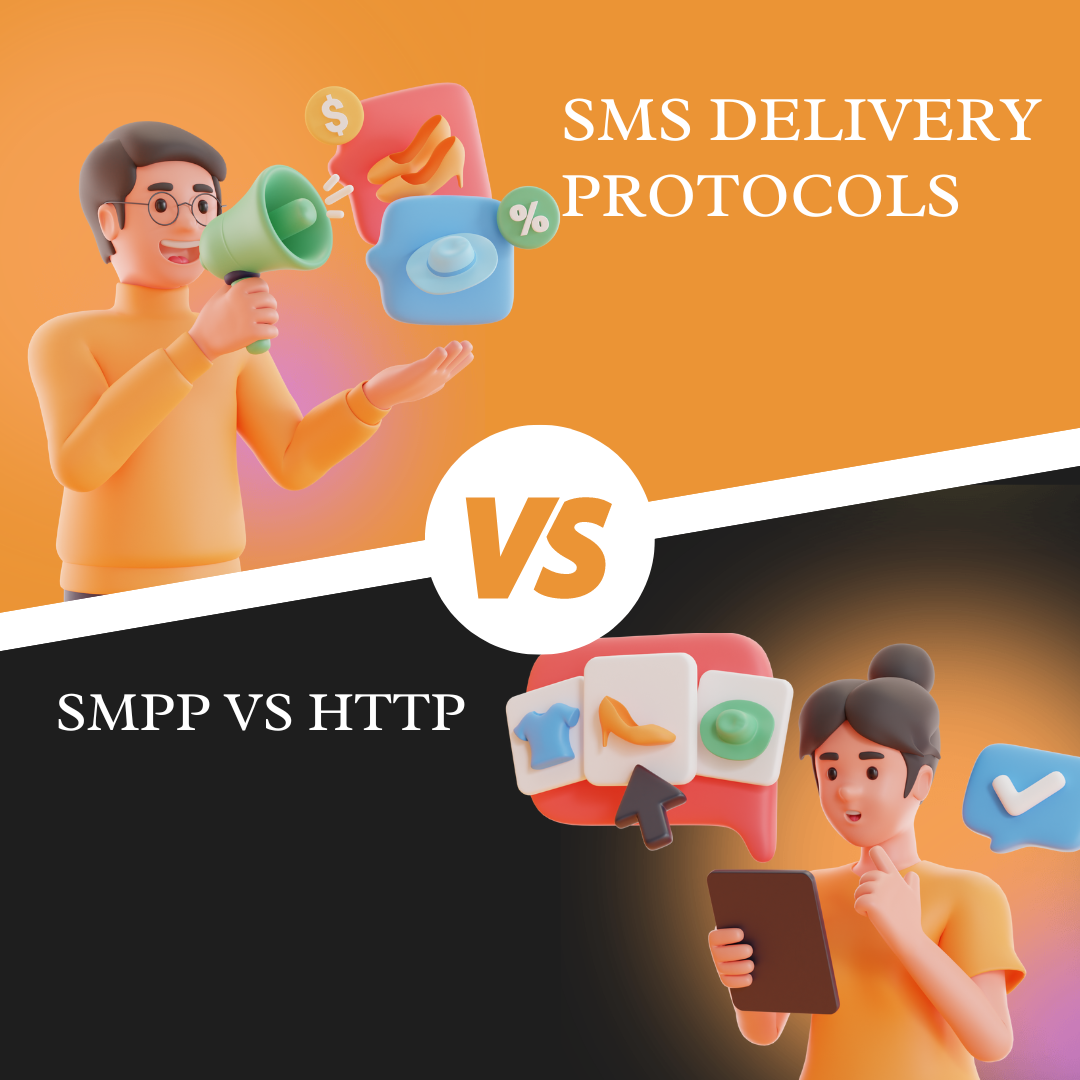
SMS Delivery Protocols: SMPP vs. HTTP
What is SMPP?
SMPP, or Short Message Peer-to-Peer, is a method designed specifically for sending SMS messages between different systems, like between a phone company and an app or website.
Key Features of SMPP:
- Made for SMS: SMPP is created especially for sending SMS, offering strong features for managing messages.
- Always Connected: It works over a constant connection, allowing fast, two-way communication and handling many messages at once.
- High Speed: SMPP can send a lot of messages very quickly, which is great for high-volume needs.
- Delivery Reports: It provides updates on whether messages were delivered, so you can track them easily.
- Supports Multimedia: Can send not just text, but also binary data like images or ringtones.
Use Cases for SMPP:
- Telecom Companies: Used by phone companies to send and receive messages reliably.
- Mass SMS Services: Important for businesses that send many SMS messages, like marketing alerts.
- Immediate Feedback Needs: Good for apps needing instant confirmation of message delivery.
What is HTTP?
HTTP, or HyperText Transfer Protocol, is the main method for data communication on the web. It’s more general than SMPP and is widely used for web services, including sending SMS.
Key Features of HTTP:
- Widely Used: HTTP is everywhere, making it easy to add SMS features to web apps and systems.
- Simple Requests: It works on a request-response model, which is easy to implement but may not support real-time updates well.
- Easy to Use: Most programming languages support HTTP, making development simpler.
- Scalable: HTTP-based SMS services can grow easily, using web servers and cloud services.
- Secure: Supports encryption (SSL/TLS) to protect message content and data.
Use Cases for HTTP:
- Web Apps: Perfect for adding SMS notifications, verification codes, and more to websites and web apps.
- APIs: Commonly used in SMS API services, where developers send SMS through simple HTTP requests.
- Moderate Volume: Good for applications that don’t need very high message volumes or real-time tracking.
SMPP vs. HTTP: A Comparison
Performance and Speed:
- SMPP: Handles high performance and many messages per second, suitable for high-volume needs.
- HTTP: While scalable, it might not handle as many messages as SMPP in the same timeframe.
Integration and Development:
- SMPP: Requires more specialized knowledge and can be complex to set up.
- HTTP: Easier to integrate with plenty of resources and tools available.
Reliability and Tracking:
- SMPP: Offers strong delivery receipts and status updates for reliable message tracking.
- HTTP: Can support delivery receipts but might not be as reliable in real-time tracking as SMPP.
Security:
- Both: Can be secured with encryption (SSL/TLS), but SMPP often also uses secure connections like VPNs.
Cost:
- SMPP: Usually more expensive to set up and maintain because it needs specialized infrastructure and expertise.
- HTTP: Generally cheaper, using existing web infrastructure and requiring less specialized knowledge.
Conclusion
Choosing between SMPP and HTTP for SMS delivery depends on what you need. If you need to send many messages quickly and track them in real time, SMPP is best. If you want something easier and cheaper to set up that works well with web apps, HTTP is a good choice.
Understanding these methods helps you choose the right one, ensuring your SMS communication is reliable and efficient. Whether you choose SMPP or HTTP, both offer good ways to use the power of SMS today.

